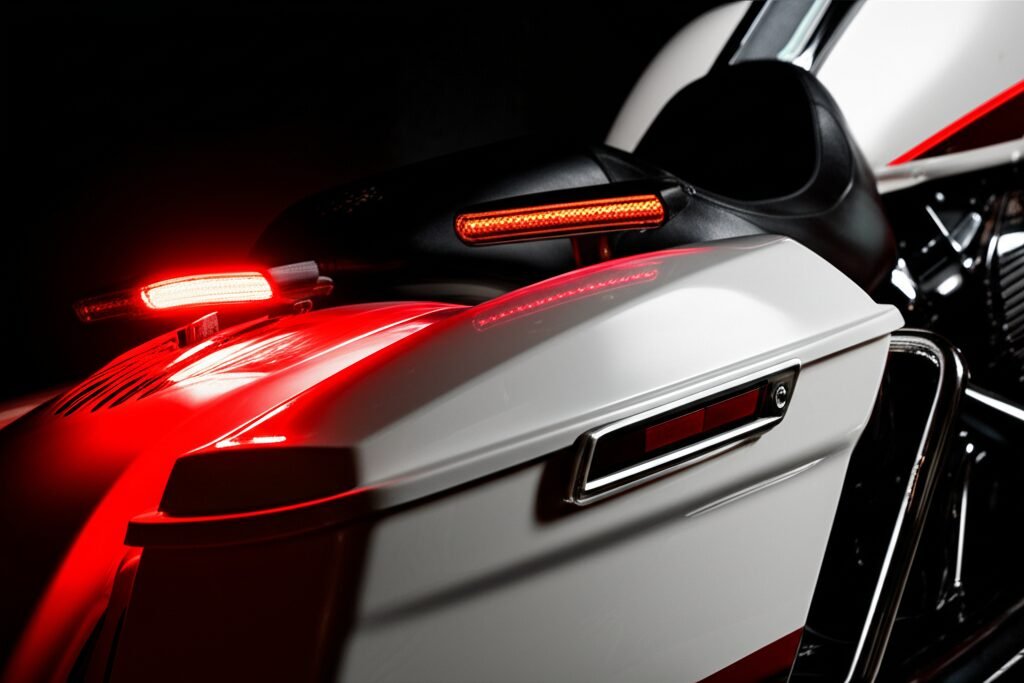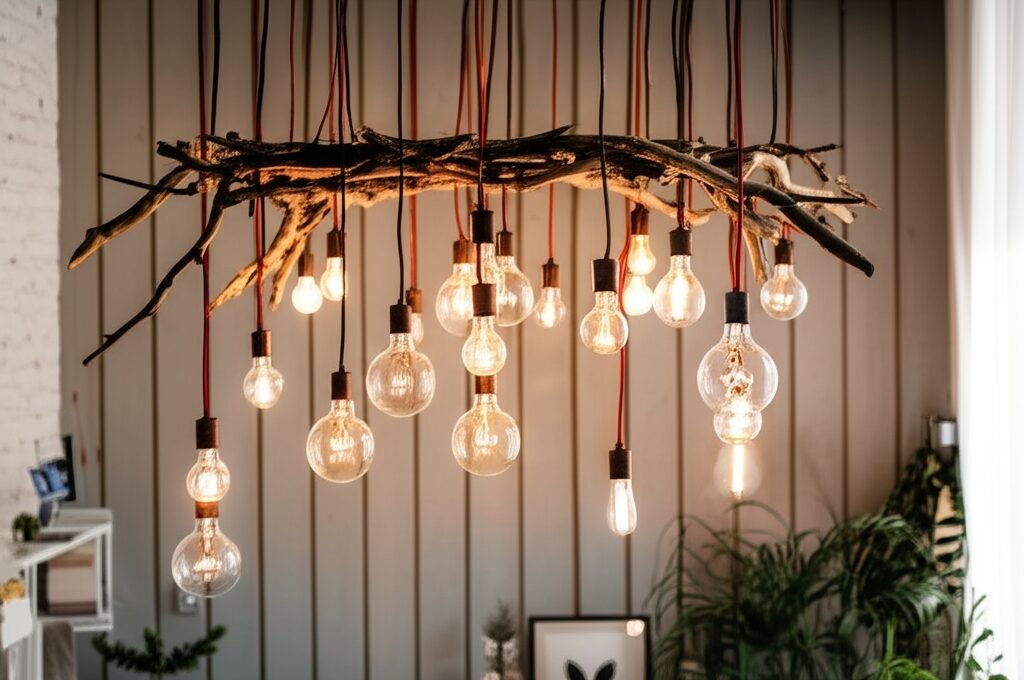Top Custom Trailer Lights for Your Vehicle Needs
| Key Aspect | Important Details |
|---|---|
| Federal Requirements | All trailers need stop lights, tail lights, turn signals, and reflectors |
| LED Advantages | Last 50 times longer than incandescent, brighter, faster response |
| Waterproof Rating | Look for IP68 submersible rating for boat trailers |
| DOT Compliance | All lights must display “DOT” marking for legal use |
| Installation Key | Run dedicated ground wires to prevent 75% of failures |
Choosing the right trailer lights isn’t just about staying legal on the road. The right custom lighting setup protects your investment, keeps other drivers safe, and saves you from roadside headaches. Let’s break down everything you need to know about selecting, installing, and maintaining trailer lights that actually work.
Understanding Trailer Light Requirements by Size
Federal regulations require all trailers to have stop lights, tail lights, turn signals, and reflectors, regardless of size. But here’s where it gets specific – your trailer’s dimensions determine exactly what lights you’ll need.
For trailers under 80 inches wide and shorter than 30 feet, you need two stop lights, two tail lights, two turn signals, a license plate light, and rear reflectors. The placement matters too – lights must be positioned 15 to 72 inches from the ground.
Got a wider trailer? Trailers 80 inches wide or wider require additional clearance lights, side marker lights, and three rear identification lights. These aren’t suggestions – they’re federal requirements that can result in hefty fines if ignored.
Length adds another layer. Trailers over 30 feet long need intermediate side marker lamps and reflectors positioned near the center of each side. For really heavy trailers over 10,000 pounds GVWR, conspicuity treatments (reflective tape) become mandatory.
LED vs Incandescent: Why LEDs Win Every Time
The LED revolution hit trailer lighting hard, and for good reason. LED lights can last up to 50 times longer than incandescent bulbs – about 50,000 hours compared to 1,000 hours. That’s not just marketing fluff; it’s real-world performance you’ll notice.
LEDs light up faster than traditional bulbs, giving following drivers precious extra milliseconds to react when you hit the brakes. They also handle thermal shock better and are permanently sealed against moisture, which means fewer roadside failures.
The brightness difference is substantial too. Federal regulations require tail lights to be visible from at least 500 feet away, while brake lights and turn signals must be visible from at least 300 feet. Quality LEDs exceed these requirements easily, even in bright sunlight.
Energy efficiency matters more than you might think. LEDs draw less power from your vehicle’s electrical system, reducing strain on the alternator and improving fuel economy during long hauls. For RV owners running on battery power, this efficiency can extend your off-grid time significantly.
Submersible and Waterproof Options for Marine Use
Boat trailer owners face unique challenges that standard trailer lights simply can’t handle. Regular incandescent bulbs are not built to last underwater, making waterproof LED lights essential for marine applications.
Look for IP68 ratings when shopping for submersible lights. This rating means the light can withstand continuous submersion in water deeper than one meter. Quality submersible lights feature sonic welding between the lens and housing, creating a permanent waterproof seal.
Saltwater presents additional challenges beyond fresh water. Corrosion eats through connections and grounds faster than you’d expect. The smartest way to prolong boat trailer light life is unplugging them before backing into water, as electricity and water create the perfect recipe for electrolysis damage.
Some manufacturers now offer lights specifically designed for saltwater use, with upgraded seals and corrosion-resistant materials. These cost more upfront but pay off through reduced replacement frequency and fewer frustrating breakdowns at the boat ramp.
Top Custom Trailer Light Brands and Models
The trailer lighting market offers everything from budget options to premium systems. After analyzing user reviews and expert recommendations, several brands consistently rise to the top.
Optronics leads the pack for many users. Several forum users recommend Optronics lights with lifetime warranties, noting their availability at AutoZone with easy exchange policies. Their rectangular designs fit most trailers well and connect easily to existing wiring.
PeakTow, a Canadian company, stands out for build quality. Their lights feature completely sealed construction with no surface screws, eliminating rust risks. The company backs their products with confident money-back guarantees and responsive customer service.
Wesbar tail lights earn praise from marine users for reliability when properly grounded. Professional installers often choose Wesbar for commercial applications where failure isn’t acceptable.
Hopkins offers innovative solutions like wireless magnetic systems. Their lights work well for temporary setups or situations where traditional wiring proves difficult. The magnetic systems hold strong even at highway speeds while offering quick removal when needed.
Installation Best Practices for Long-Lasting Performance
Most trailer light failures aren’t caused by bad bulbs or water damage – they’re caused by poor grounding. Running dedicated ground wires eliminates 75% of trailer light failures, making this the single most important installation tip.
Instead of grounding to the trailer frame, run individual ground wires from each light back to a central junction box. Use 6-32 screws with lock nuts when mounting lights, and apply corrosion inhibitor to all connections.
Wire choice matters enormously for longevity. Marine-grade tinned copper wire resists corrosion far better than standard automotive wire. Use Ancor heat shrink connectors with adhesive lining, and invest in proper crimping tools.
Junction boxes centralize all connections at the tongue of your trailer, keeping splices out of harsh environments. This approach requires more wire but dramatically reduces the chances of connection failures that leave you stranded.
Heat gun application for heat shrink connections shouldn’t be rushed. Proper heating creates watertight seals that last for years, while rushed connections fail within months of installation.
Wireless and Magnetic Trailer Light Solutions
Technology has revolutionized trailer lighting with wireless systems that eliminate wiring headaches entirely. Modern wireless trailer lights operate on 2.4GHz frequency with ranges exceeding 100 feet, making them suitable for even the longest truck and trailer combinations.
Battery technology has improved dramatically too. USB-C charging ports allow full charges in 2.5 hours with up to 9 hours of continuous use. This runtime easily handles full days of towing without power concerns.
Magnetic mounting systems use powerful neodymium magnets that hold securely even at highway speeds. Quality systems feature protective layers to prevent scratching trailer surfaces while maintaining strong magnetic grip.
The main advantage of wireless systems is flexibility. You can move lights between trailers, remove them for security, or quickly set up lighting on borrowed equipment. They’re particularly valuable for rental trailers or situations where permanent wiring isn’t practical.
Some systems offer smartphone control through Bluetooth apps, allowing you to test functions without walking to the back of your trailer. This feature proves invaluable during pre-trip inspections or troubleshooting connection issues.
Choosing the Right Lights for Your Trailer Type
Different trailer applications demand different lighting approaches. Utility trailers face road debris and weather but typically stay dry. For small utility trailers, complete LED kits with side markers and clearance lights offer the best value.
Boat trailers need submersible ratings and corrosion resistance. Look for lights rated for saltwater use if you’ll be launching in marine environments. Consider moving lights to guide posts to keep them out of the water entirely – this simple change can extend light life dramatically.
RV and travel trailers benefit from lower-profile lights that won’t catch on low branches or parking structures. Event-specific lighting solutions can enhance your camping experience beyond basic safety requirements.
Commercial trailers must meet stricter visibility requirements. Trailers over 80 inches wide and 10,000 pounds GVWR require conspicuity treatments – reflective tape patterns that outline the trailer’s dimensions.
Enclosed trailers need additional considerations for VIP areas with custom lighting if you’re using them for mobile businesses or specialized applications.
Maintenance Tips to Extend Light Lifespan
Preventive maintenance saves money and prevents dangerous roadside failures. Unplugging lights before launching boats prevents electrolysis damage, the leading cause of marine trailer light failure.
Regular visual inspections catch problems before they become emergencies. Check for cracked lenses, corroded connections, and loose mounting hardware. Apply corrosion inhibitor to ground connections, as these corrode fastest in marine environments.
Carry spare bulbs or complete light assemblies for long trips. Many experienced users keep spare lights in their trucks, as failures often happen at the worst possible times.
For DIY safety tips, always test your entire lighting system before each trip. A simple plug-in check can reveal problems while you’re still at home rather than on a dark highway.
Consider keeping a basic repair kit with wire nuts, electrical tape, and a multimeter. Many lighting failures involve simple connection issues that take minutes to fix with the right tools and knowledge.
Quality trailer lights aren’t just about meeting legal requirements – they’re about safety, reliability, and peace of mind on the road. Whether you choose traditional wired LEDs or cutting-edge wireless systems, proper selection and installation will keep you visible and legal for years to come.
Frequently Asked Questions
What trailer lights are required by law?
All trailers need stop lights, tail lights, turn signals, license plate lights, and reflectors. Trailers over 80 inches wide require additional clearance lights and side markers.
How long do LED trailer lights last?
Quality LED trailer lights can last 50,000 hours or more – roughly 50 times longer than traditional incandescent bulbs.
Do I need submersible lights for my boat trailer?
Yes, boat trailers should use lights rated for submersion. Look for IP68 ratings and consider unplugging lights before launching to prevent electrolysis damage.
Why do my trailer lights keep failing?
Most failures result from poor grounding. Run dedicated ground wires from each light to prevent 75% of common problems.
Are wireless trailer lights legal?
Yes, wireless trailer lights that meet DOT standards and provide all required functions are legal for road use.
How much do quality trailer lights cost?
Complete LED trailer light kits range from $30-100, while individual lights cost $15-50 depending on features and quality level.















